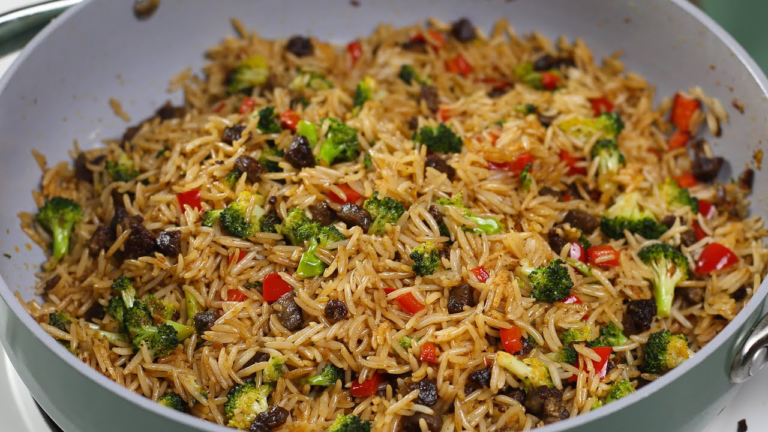Delicious Chalimidi Recipe: A Traditional Treat
Looking for a delectable Indian sweet that will leave you craving for more? Look no further! Introducing the mouthwatering Chalimidi recipe. This traditional delicacy hailing from the Andhra Pradesh region is a true culinary masterpiece. Wondering how to make this irresistible dessert at home? I’ve got you covered. In this article, we’ll dive right into the simple yet enchanting process of creating Chalimidi, step by step. Get ready to indulge in the rich flavors and textures of this delightful treat that will surely elevate your culinary skills. So, let’s get started!
Chalimidi Recipe: An Authentic South Indian Sweet Delight
If you have a sweet tooth and are a fan of Indian desserts, then the delectable chalimidi is a must-try. This traditional South Indian sweet is known for its unique texture, rich flavors, and cultural significance. Made with rice flour, jaggery, ghee, and flavored with cardamom, chalimidi is a treat that is not only delicious but also easy to prepare at home.
The Origin and Significance of Chalimidi
Chalimidi holds a special place in the hearts of people in Andhra Pradesh, Telangana, and other regions of South India. It is often prepared during festivals, weddings, and other auspicious occasions. Chalimidi is also a popular prasadam (blessed food) offered in temples.
The word “chalimidi” is derived from the Telugu word “chalimidi” which means “cooked rice flour.” It is believed that chalimidi was traditionally prepared as an offering to deities during rituals and festivals. Over time, it evolved into a delightful sweet enjoyed by people of all ages.
The Ingredients and Preparation Process
To prepare chalimidi, you will need the following ingredients:
- 1 cup rice flour
- 1 cup jaggery (grated or powdered)
- 2 tablespoons ghee (clarified butter)
- 1/4 teaspoon cardamom powder
- A pinch of salt
- A handful of roasted cashews and almonds (optional, for garnish)
Here’s a step-by-step guide on how to make chalimidi:
- In a deep bowl, mix the rice flour with a pinch of salt and set it aside.
- In a separate pan, melt the jaggery with a little water over medium heat until it dissolves completely. Strain the jaggery syrup to remove any impurities.
- Transfer the jaggery syrup back to the pan and bring it to a boil. Cook until the syrup reaches a one-string consistency. To check the consistency, take a little syrup between your thumb and index finger, and when you pull them apart, you should see a thin thread forming.
- Add the cardamom powder and ghee to the jaggery syrup and mix well.
- Slowly add the rice flour to the jaggery syrup while stirring continuously to avoid lumps. Cook the mixture on low heat for about 5-7 minutes until it thickens.
- Remove the pan from heat and allow the mixture to cool slightly.
- Grease your hands with ghee and shape the warm chalimidi mixture into small balls or flat discs.
- Garnish with roasted cashews and almonds if desired.
- Let the chalimidi cool completely before serving.
Pro Tips:
- Make sure to use fine rice flour for a smooth texture.
- Adjust the sweetness according to your preference by adding more or less jaggery.
- For a vegan version, you can replace ghee with coconut oil.
- To enhance the flavor, you can also add a pinch of edible camphor (pacha karpooram) or nutmeg powder to the mixture.
Chalimidi Variations and Complementary Dishes
While the basic chalimidi recipe itself is delightful, there are a few variations you can try to add a twist to this traditional sweet:
1. Coconut Chalimidi:
Adding shredded coconut to the chalimidi mixture gives it a delightful texture and enhances the flavor. Simply stir in some freshly grated coconut while cooking the rice flour and jaggery mixture.
2. Dry Fruit Chalimidi:
You can make the chalimidi more indulgent by adding a generous amount of chopped dry fruits like cashews, almonds, pistachios, and raisins to the mixture. This variation adds a delightful crunch and richness to the sweet.
3. Sesame Chalimidi:
To add a nutty flavor to the chalimidi, you can roast sesame seeds and mix them into the rice flour and jaggery mixture. This variation is perfect for those who enjoy the combination of sweetness and a slight crunch.
Complementary Dishes:
Chalimidi is often served as part of a traditional South Indian meal or as a standalone sweet. Here are a few dishes that pair well with chalimidi:
- Pulihora (Tamarind Rice)
- Daddojanam (Curd Rice)
- Pongal (Lentil and Rice Dish)
- Bobbatlu (Sweet Stuffed Roti)
Health Benefits of Chalimidi
While chalimidi is a sweet treat to indulge in moderation, it also offers some health benefits:
- Jaggery used in the recipe is a healthier alternative to white sugar as it retains some of the natural nutrients like iron, magnesium, and potassium.
- Rice flour provides carbohydrates for energy, and when consumed in moderation, it can be a healthy addition to your diet.
- Cardamom, a common spice used in chalimidi, has antioxidant and anti-inflammatory properties, and promotes digestion.
- Ghee, when consumed in small amounts, can provide essential fats and vitamins.
In Conclusion
Chalimidi is a delightful and easy-to-make sweet that holds cultural significance in South India. Whether you want to prepare it for a special occasion or simply satisfy your sweet cravings, this traditional recipe is sure to please your taste buds. So, grab the ingredients, follow the steps, and enjoy the mouthwatering chalimidi at home.
Frequently Asked Questions
What is chalimidi?
Chalimidi is a traditional Andhra sweet made with rice flour, jaggery, ghee, and cardamom. It is typically prepared during festivals and special occasions.
How do I make chalimidi at home?
To make chalimidi at home, start by dry roasting rice flour until it turns aromatic. Then, combine the roasted rice flour with melted ghee, powdered jaggery, and cardamom powder. Mix well to form a smooth dough. Shape the dough into small, bite-sized balls or flatten them into discs. Allow them to cool and set before serving.
Can I use any type of rice flour for chalimidi?
Ideally, it is recommended to use homemade rice flour for chalimidi as it gives the best texture and taste. However, if you don’t have access to homemade rice flour, you can use store-bought rice flour. Make sure to choose a fine variety of rice flour for better results.
Can I use sugar instead of jaggery in chalimidi?
Traditionally, jaggery is used in chalimidi as it adds a unique flavor and richness to the sweet. However, if you prefer, you can substitute jaggery with an equal amount of powdered sugar. Keep in mind that the taste and texture might differ slightly.
How long does chalimidi stay fresh?
Chalimidi can stay fresh for about 3-4 days when stored in an airtight container at room temperature. It is important to ensure that the sweet is stored in a cool and dry place to maintain its freshness. If the weather is humid, it is advisable to refrigerate the chalimidi to extend its shelf life.
Can I make chalimidi without ghee?
Ghee is a key ingredient in chalimidi as it enhances the flavor and adds richness to the sweet. However, if you want to avoid using ghee, you can try substituting it with melted unsalted butter or a neutral-tasting oil like coconut oil. Keep in mind that the taste and texture may be slightly different from the traditional version.
Final Thoughts
Chalimidi is a traditional Indian sweet made with rice flour, jaggery, and ghee. This delightful treat is often prepared during festivals and special occasions. The recipe is simple and the result is a deliciously sweet and chewy dessert. To make chalimidi, combine rice flour with melted ghee and jaggery syrup until a smooth dough is formed. Shape the dough into small balls or flatten them into discs and garnish with nuts or coconut flakes. Enjoy the tempting flavor and texture of chalimidi, a perfect addition to any festive celebration.



